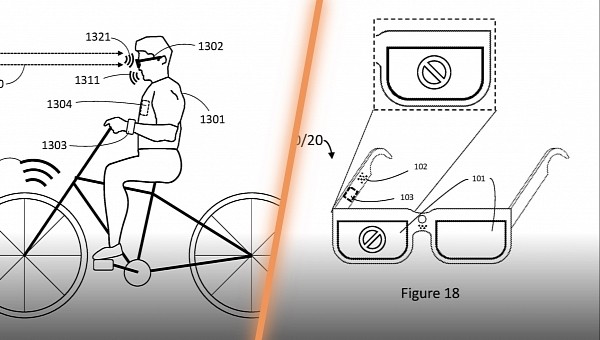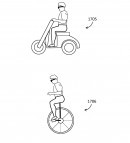Smartphones are currently fitted with dedicated profiles and settings for driving, but Google believes the use of all wearables should be restricted when you get behind the wheel.
The company explains in a new patent that wearables should only provide navigation information to the driver. Otherwise, the rest of the capabilities should be blocked specifically to reduce distraction.
A new technology called “systems, devices, and methods for controlling operation of wearable displays during vehicle operation” covers a wide array of products, including smart glasses and smartwatches.
Using integrated sensors, a central system would be able to determine if the wearer is controlling a vehicle. This can be anything from vehicles and motorcycles to bikes and even helicopters.
When the vehicle starts moving, the sensors transmit such data to the system. Access to the display is automatically restricted, preventing the use of these devices until the vehicle comes to a halt.
Google knows that in some cases, using a wearable device could even be recommended while driving. Smart glasses can help drivers, so the company says that navigation information can be allowed to go through. For example, smart glasses would be able to display route guidance on their screens, but otherwise, the rest of the content is blocked.
Of course, the enforced restrictions can still be bypassed by the user when required. The method can include various options, such as long-pressing a certain button to disable the restrictions and allow the regular use of the device.
Voice commands will allow users to interact with their devices when screens are locked. This approach is already available on Android Auto, for instance, where certain features, including the keyboard, are locked when the vehicle is in motion. Drivers can still control the navigation software or the music playback with voice commands, being allowed to change the song, set a new destination, or make a phone without touching the display.
The restrictions are supposed to reduce distraction behind the wheel, especially as texting and driving continues to be a major concern across the world. Previous studies have shown that even infotainment systems could become a source of distraction, as drivers tend to look at the screen for navigation or music information.
The adoption of voice command has skyrocketed in the last few years, and both Google and Apple have tried to update their assistants for more advanced capabilities in the car. On Android Automotive, Google Assistant can now control more vehicle features, including the air conditioning systems. Voice commands such as “set the temperature” to a certain level let drivers adjust the climate controls without taking their eyes off the road. A similar experience will also be available on CarPlay when the new-generation version launches this year.
A new technology called “systems, devices, and methods for controlling operation of wearable displays during vehicle operation” covers a wide array of products, including smart glasses and smartwatches.
Using integrated sensors, a central system would be able to determine if the wearer is controlling a vehicle. This can be anything from vehicles and motorcycles to bikes and even helicopters.
When the vehicle starts moving, the sensors transmit such data to the system. Access to the display is automatically restricted, preventing the use of these devices until the vehicle comes to a halt.
Google knows that in some cases, using a wearable device could even be recommended while driving. Smart glasses can help drivers, so the company says that navigation information can be allowed to go through. For example, smart glasses would be able to display route guidance on their screens, but otherwise, the rest of the content is blocked.
Of course, the enforced restrictions can still be bypassed by the user when required. The method can include various options, such as long-pressing a certain button to disable the restrictions and allow the regular use of the device.
Voice commands will allow users to interact with their devices when screens are locked. This approach is already available on Android Auto, for instance, where certain features, including the keyboard, are locked when the vehicle is in motion. Drivers can still control the navigation software or the music playback with voice commands, being allowed to change the song, set a new destination, or make a phone without touching the display.
The restrictions are supposed to reduce distraction behind the wheel, especially as texting and driving continues to be a major concern across the world. Previous studies have shown that even infotainment systems could become a source of distraction, as drivers tend to look at the screen for navigation or music information.
The adoption of voice command has skyrocketed in the last few years, and both Google and Apple have tried to update their assistants for more advanced capabilities in the car. On Android Automotive, Google Assistant can now control more vehicle features, including the air conditioning systems. Voice commands such as “set the temperature” to a certain level let drivers adjust the climate controls without taking their eyes off the road. A similar experience will also be available on CarPlay when the new-generation version launches this year.







